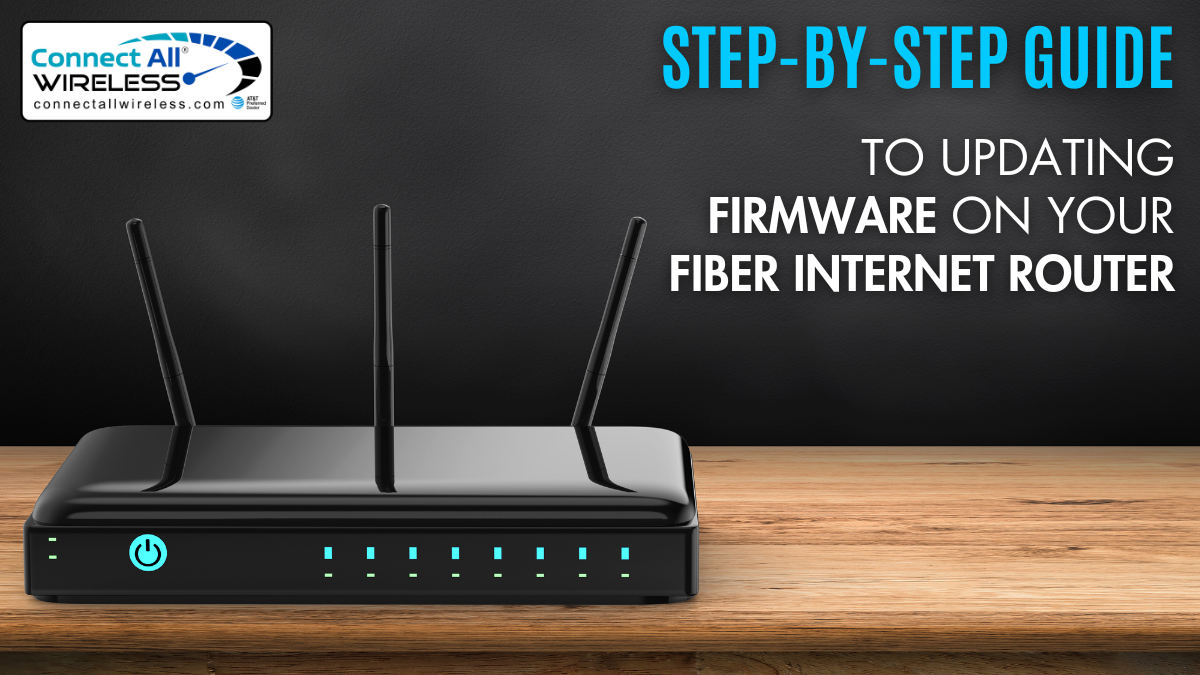Step-by-Step Guide to Updating Firmware on Your Fiber Internet Router
February 22, 2024In the digital age, where our lives are increasingly reliant on seamless internet connectivity, ensuring that your router’s firmware is up to date is crucial for optimal performance and security. Firmware updates contain patches for vulnerabilities, improvements in functionality, and sometimes even new features. If you’re using a fiber internet router, here’s a step-by-step guide to help you through the process of updating its firmware.
Step 1: Preparation
Before diving into the firmware update process, it’s essential to gather some crucial information. First, identify the make and model of your fiber internet router. This information is usually located on a sticker on the router itself or in the user manual. Once you have this information, visit the manufacturer’s website to find the latest firmware version available for your router model. Download the firmware file onto your computer.
Step 2: Backup Your Settings
Although firmware updates are designed to preserve your router’s settings, it’s always a good idea to create a backup before proceeding. Most routers have a built-in feature that allows you to export your settings to a file. Navigate to the router’s web-based interface using a web browser, usually by typing the router’s IP address into the address bar. Look for an option to backup settings and follow the on-screen instructions to save the configuration file to your computer.
Step 3: Connect to Your Router
Ensure that your computer is connected to your router either via an Ethernet cable or through a Wi-Fi connection. For the firmware update process, a wired connection is preferred to avoid any interruptions that could occur with a wireless connection.
Step 4: Access the Router’s Web Interface
Open a web browser on your computer and enter the router’s IP address in the address bar. This will typically be something like “192.168.1.1” or “192.168.0.1”, but it may vary depending on your router model. Once entered, you should be prompted to enter your router’s username and password. If you haven’t changed these from the default settings, you can find them in the router’s documentation.
Step 5: Navigate to the Firmware Update Section
Once logged into the router’s web interface, look for the firmware update section. This is usually located under the “Administration,” “System,” or “Maintenance” tab, but it may vary depending on your router’s firmware version. Click on the firmware update option to proceed.
Step 6: Upload the Firmware File
In the firmware update section, you should see an option to upload the firmware file you downloaded earlier. Click on the “Browse” or “Choose File” button and navigate to the location where you saved the firmware file on your computer. Select the file and click “Open” to begin the upload process.
Step 7: Initiate the Firmware Update
After uploading the firmware file, follow the on-screen instructions to initiate the firmware update process. This may involve clicking an “Apply” or “Update” button. Once started, do not interrupt the update process or turn off your router as this could cause permanent damage.
Step 8: Wait for the Update to Complete
The firmware update process may take several minutes to complete, depending on the size of the firmware file and the speed of your internet connection. During this time, avoid using the internet or making changes to your router’s settings. Your router may reboot automatically once the update is finished.
Step 9: Restore Your Settings
After the firmware update is complete and your router has rebooted, log back into the router’s web interface. If prompted, restore your settings using the backup configuration file you created earlier. This will ensure that your router retains its previous settings and configurations.
Step 10: Verify the Update
Once you’ve restored your settings, take a moment to verify that the firmware update was successful. Navigate back to the firmware update section in the router’s web interface and confirm that the version number matches the latest firmware version available on the manufacturer’s website.
Conclusion
In conclusion, maintaining the firmware of your fiber internet router is paramount for a reliable and secure online experience. This step-by-step guide empowers users to navigate the update process seamlessly, enhancing their router’s performance and fortifying its defenses against potential threats. As we embrace the era of 5G Fiber Internet in Michigan, staying current with firmware updates ensures that your router can capitalize on the latest technological advancements, optimizing connectivity and speed.
Regular updates safeguard your network, providing a shield against emerging vulnerabilities. By investing a small amount of time in this routine maintenance, users can enjoy the full potential of their fiber internet connection, ensuring a smooth and uninterrupted online experience in the vibrant digital landscape of Michigan. Stay connected, stay secure, and reap the benefits of cutting-edge technology by making firmware updates a routine part of your network management strategy.


